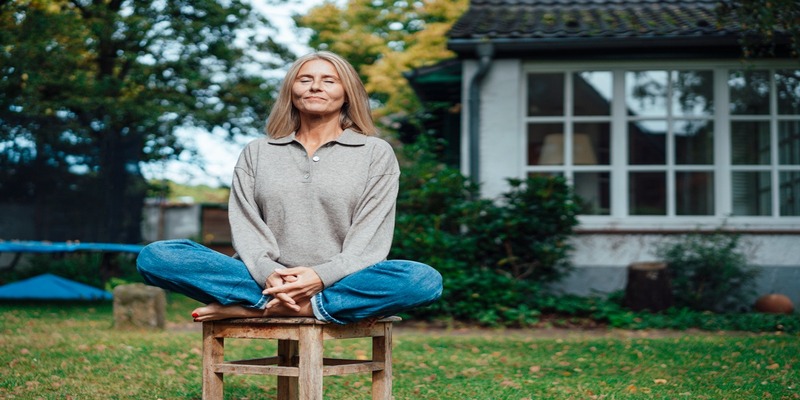Dr. Andrew Weil created a new breathing technique called the 4-7-8 breathing technique. It is based on pranayama, a traditional yogic breathing exercise that aims to improve one's control over one's breath. This method, if used frequently, may shorten the time it takes some people to nod off.
The 4-7-8 Breathing Technique—How Does It Work?

Breathing exercises aim to induce a profound level of calm by regulating breathing. It is possible to restore your body's oxygen supply by following specific breathing patterns that entail holding your breath for a set amount of time. Increasing oxygen flow from the lungs to the rest of the body, methods like the 4-7-8 method can help your organs and tissues function more optimally.
The fight-or-flight reaction is regulated, and the body returns to equilibrium through relaxation activities after experiencing stress. If you're having trouble sleeping because of worry or anxiety about what occurred today or what could happen tomorrow, this can help.
A Step-by-Step Guide On How To Get It Done
It would help if you sat or lay relaxed to practice 4-7-8 breathing. Maintain an upright stance, especially at the outset. If you want to use this method to help you nod off, laying down is the way to go. Put your mind at ease by placing the tip of your tongue on the roof of your mouth, just below your top front teeth, while you get ready for the exercise.
Maintain a fixed position of the language throughout the drill. Avoiding tongue movement during exhalation takes some getting used to. Some people find that pursing their lips during 4-7-8 breathing makes it simpler to exhale. All of the following should be done within the span of a single breath:
- Start by separating your lips. Exhale thoroughly through your mouth to create a whooshing sound.
- With your mouth closed, count to four mentally while you take a deep breath through your nose.
- Stop breathing for seven seconds.
- Take an eight-second whooshing to exhale.
A fresh breathing cycle begins each time you take a deep breath in. Do this for four full breaths. The most critical component of this technique is controlling your breathing while holding the position. When you're just starting, it's best to limit yourself to four rounds of 4-7-8 breathing. By practicing regularly, you may increase the number of complete breaths you take to eight.
Results of Studies
You feel overstimulated and unable to relax and transition into sleep when stress activates your sympathetic nervous system, which controls your fight-or-flight reaction. Fast heartbeat and shallow breathing are symptoms of an overactive sympathetic nervous system.
He also noted that the 4-7-8 breathing pattern could stimulate the parasympathetic nervous system, decreasing sympathetic activity and preparing the body for a comfortable night's sleep.
If you're worried and can't sleep, try activating your parasympathetic nervous system. He stated that further study was needed to show more explicit linkages between 4-7-8 and sleep and other health advantages, even though proponents of the strategy swore by it.
Methods Apart from Taking a Nap
Even if you're only having trouble sleeping a few hours a night because of stress or worry, 4-7-8 breathing may be just what the doctor ordered. If more than this method is required, it may be more successful when paired with additional therapies.
- A face covering for use when sleeping
- an electronic device that generates white noise
- earplugs
- soothing tunes
- Using a diffuser to spread the scent of lavender
- cutting back on caffeine
- Yoga before bed
If you find that 4-7-8 breathing is ineffective, alternative methods, such as mindfulness meditation or guided imagery, work better for you.
What To Anticipate

While the 4-7-8 method is generally safe, it may cause some dizziness in novice users. Taking in an equal amount of oxygen as you exhale constitutes "normal" breathing. He explained that if you breathe out more than you take in, your body's carbon dioxide levels will drop quickly.
The brain's blood arteries constrict in response to low carbon dioxide levels. Lightheadedness and other symptoms result from decreased blood flow to the brain. It is advised to take it easy and do three or four cycles at a time until you get the hang of it.
The more you use the 4-7-8 approach, the better you'll get at it, and the more your body and mind absorb it into your everyday stress- and anxiety-management strategies. Progressive muscle relaxation, yoga, mindfulness, and meditation are just some of the relaxation techniques that individuals use in conjunction with this.




